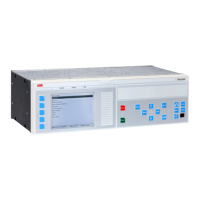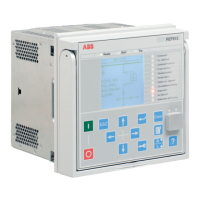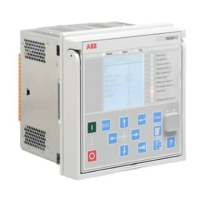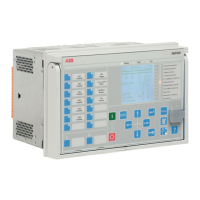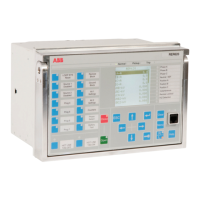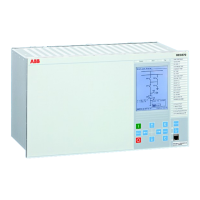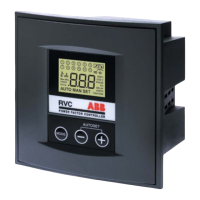Section 4 1MAC309294-MB F
Protection functions
172 RER620
Technical Manual
4.1.6 Negative phase-sequence current protection 46
4.1.6.1 Identification
4.1.6.2 Function block
Figure 76: Function block
4.1.6.3 Functionality
The negative sequence current protection 46 is used for increasing sensitivity to detect
single phasing situations, unbalanced loads due to, for example, unsymmetrical feeder
voltages.
The function is based on the measurement of the negative sequence current. In a fault
situation, the function picks up when the negative sequence current exceeds the set limit.
The trip time characteristics can be selected to be either definite time (DT) or inverse
definite minimum time (IDMT). In the DT mode, the function trips after a predefined trip
time and resets when the fault current disappears. The IDMT mode provides current
dependent timer characteristics.
The function contains a blocking functionality. It is possible to block function outputs,
timers, or the function itself, if desired.
4.1.6.4 Operation principle
The function can be enabled and disabled with the Operation setting. The corresponding
parameter values are Enable and Disable.
The operation of negative phase-sequence current protection can be described by using a
module diagram. All the blocks in the diagram are explained in the next sections.
Function description
IEC 61850
identification
IEC 60617
identification
ANSI/IEEE C37.2
device number
Negative sequence current protection NSPTOC I2> 46
46 can also be used for detecting broken conductors.
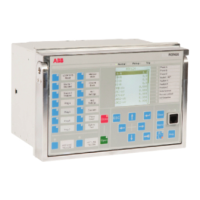
